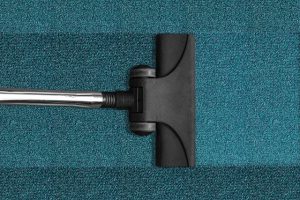Discover the ultimate secret to removing even the toughest stains from your furniture, including expert tips and tricks that will leave your home looking as good as new.
Why are some stains so difficult to remove?
Stains on furniture can be quite frustrating to deal with, especially when they seem to resist all attempts at removal. This is because different types of stains can be caused by different substances, each with unique chemical properties that make them stubborn to remove. For instance, oil-based stains can be particularly challenging to remove because they bond strongly with the fabric or wood surface, making them resistant to water-based cleaning solutions. Similarly, protein-based stains such as blood or urine can be difficult to remove due to their tendency to coagulate or dry into the material.
Another reason why some stains can be difficult to remove is because of the length of time they have been left untreated. If a stain is left on furniture for a long time, it can penetrate deep into the fibers or pores of the surface, making it harder to reach and remove. Additionally, some fabrics or materials may be more susceptible to staining than others, making them more challenging to clean. For example, light-colored fabrics are more prone to staining than darker ones, and delicate materials may require special care to avoid damaging the surface during the cleaning process.
Moreover, the type of stain removal method used can also affect how difficult it is to remove a stain. Some cleaning solutions or techniques may not be effective for certain types of stains, or they may even cause damage to the furniture surface. Furthermore, improper cleaning techniques, such as scrubbing too hard or using hot water, can make the stain worse or spread it to other areas of the furniture.

A close-up of a stubborn stain on a fabric sofa
The game-changer: A secret ingredient that works wonders
If you've been struggling to remove stains from your furniture, there is one secret ingredient that can work wonders:
vinegar. Yes, that's right – plain white vinegar, which you probably already have in your pantry, can be an effective and affordable solution for removing tough stains. Here's how:
- 1. Vinegar breaks down stains:
Vinegar is acidic, which means it can break down the chemical bonds that hold stains together. This makes it easier to lift the stain from the furniture surface and wash it away. For example, if you have a coffee or wine stain on your upholstery, you can mix equal parts white vinegar and water, apply the solution to the stain, and blot it with a clean cloth. The vinegar will help dissolve the stain, making it easier to remove. - 2. Vinegar neutralizes odors:
One of the benefits of using vinegar to clean stains is that it can also help to neutralize unpleasant odors. This is particularly useful if you have pets or children who may have accidents on your furniture. Vinegar can help remove the stain and the accompanying odor, leaving your furniture smelling fresh and clean.3. Vinegar is safe for most surfaces:
Another advantage of using vinegar for stain removal is that it is safe for most types of furniture surfaces. Unlike some harsh cleaning chemicals, vinegar is unlikely to damage wood, upholstery, or other materials. However, it's always a good idea to test a small, inconspicuous area first to ensure that the vinegar won't cause any discoloration or other damage.
Is there a foolproof technique for every type of stain?
Unfortunately, there is no one-size-fits-all technique for removing every type of stain from furniture. Different stains require different approaches, and some may be more difficult to remove than others. For example, a fresh ink stain may be easier to remove than an old, set-in grease stain.
That being said, there are some general guidelines you can follow to increase your chances of successfully removing a stain. First, act quickly. The longer a stain sits on your furniture, the harder it will be to remove. Blot up any excess liquid or debris as soon as possible, and then begin treating the stain with the appropriate solution.
Second, use the right cleaning solution for the type of stain you're dealing with. For example, a protein-based stain like blood or vomit may require an enzymatic cleaner, while a grease stain may require a solvent-based cleaner. Always read the label on your cleaning product to ensure that it's appropriate for the type of stain you're dealing with.
Third, be gentle when treating your furniture. Scrubbing too hard can damage the surface of your upholstery or wood, so use a gentle touch and avoid using abrasive tools like steel wool.
Finally, if you're unsure about how to remove a particularly stubborn stain, consider calling in a professional. A furniture cleaner or upholsterer may have specialized tools and techniques that can help remove even the toughest stains.

Various types of stains on different materials, showcasing the effectiveness of the recommended techniques
How can you prevent stains from ruining your furniture in the first place?
Preventing stains from occurring in the first place is always the best strategy. One of the most effective ways to do this is by using furniture covers or slipcovers. Not only do they protect your furniture from spills and stains, but they can also add a decorative touch to your home decor.
Another way to prevent stains is by establishing rules in your household. For example, you may want to prohibit eating or drinking on the couch or in certain areas of the house. If you have young children or pets, you may also want to create designated play areas where spills and messes are less likely to occur.
Regular cleaning and maintenance can also help prevent stains from setting in. Vacuuming your furniture regularly can remove dirt and debris that can lead to stains, while dusting and polishing can help protect the surface of your wood furniture.
Finally, consider investing in stain-resistant fabrics or finishes for your furniture. Many upholstery fabrics now come with stain-resistant coatings that can repel liquids and prevent stains from setting in. Similarly, there are wood finishes that can provide a protective barrier against spills and stains.
Stain Removal Tips:
| Stain Type | Removal Method | Additional Tips | Time to complete |
|---|---|---|---|
| Grease | Mix 1/4 cup of baking soda with 1/4 cup of warm water, and rub the mixture onto the stain. | Once the stain is gone, wipe the surface clean with a damp cloth. | 15 minutes |
| Wine | Sprinkle some salt on the stain and let it sit for a few minutes. Blot the area with a damp cloth. | Repeat the process until the stain is gone. | 30 minutes |
| Ink | Soak a cotton ball in rubbing alcohol and dab the stain until it is gone. | Be sure to use a clean cotton ball each time you apply rubbing alcohol to the stain. | 15 minutes |
| Coffee | Mix equal parts white vinegar and warm water, and rub the mixture onto the stain. | Rinse the area with a damp cloth and dry with a clean towel. | 30 minutes |
With these proven methods and expert advice, you can confidently tackle even the most stubborn stains on your furniture. Remember to always test a small, inconspicuous area first and follow the recommended steps to ensure the best results. Your furniture will look brand new and your home will be a testament to your impeccable cleaning skills.






